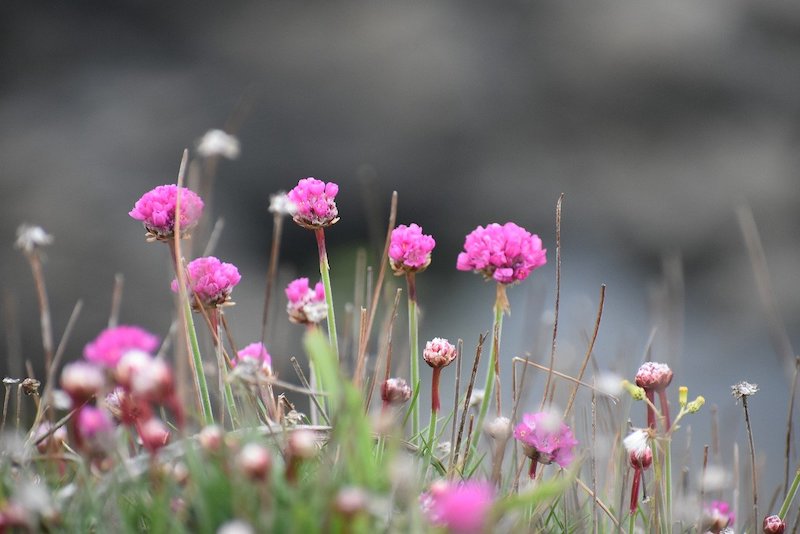
Clusters of bright pink flowers are a beautiful sight on coastal cliffs and sand dunes around Jersey at this time of year, with thrift plants flowering from April to July.
Commonly known as ‘sea pink’ and ‘cliff clover’, this clover-like wildflower grows happily on cliffs and coastlines. A perennial herb, thrift is tolerant of poor soils, salty conditions, and exposed places, making it the perfect coastal plant.
Tall stems protrude from a spongy web of foliage, topped by globe-shaped blooms. Flowers can be pink, purple, white or red, and are a good source of nectar for butterflies and moths.
There are two species of thrift in Jersey, the common thrift, Armeria maritima, and Jersey thrift, Armeria arenaria. Both species have long stems and the distinct dome of flowers, but Jersey thrift is larger and has much wider leaves. Common thrift also flowers earlier than its Jersey counterpart.
In places where both species are present, they can hybridise, producing plants with variable characteristics.
You’ll find sea pink thrift on the dunes in the west and south coast of the Island, and you might spot them in stone walls and hedge banks in coastal areas too. Look out for a spectacular floral show along the coastal dune scrub at St Ouens Bay.
With its popular pink flowers, several places in the UK have thrift as their county flower, including Bute and the Isles of Scilly. There are also reports that thrift was used in traditional medicines, for treating tuberculosis, epilepsy and even hangovers!




